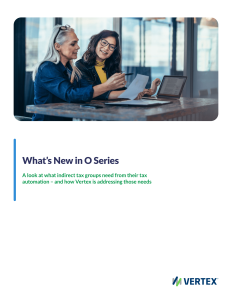Understanding Revenue SaaS: How Software-as-a-Service Drives Business Success

Software-as-a-Service (SaaS) has revolutionized the way businesses access and utilize software applications. With its flexible subscription-based model, SaaS not only offers cost-effective solutions but also plays a significant role in generating revenue for both SaaS providers and their clients. In this blog, we will explore the concept of Revenue SaaS, its benefits, and how it has become a driving force behind business success in the digital age.
- What is Revenue SaaS?
Revenue SaaS, also known as SaaS revenue model or subscription-based SaaS, refers to the practice of generating revenue through subscription-based services. In this model, SaaS providers offer software applications accessible via the Internet, and customers pay a recurring fee to use the software. This approach has replaced the traditional software purchasing model, where clients would buy a software license upfront, with high upfront costs and limited updates.
- The Benefits of Revenue SaaS
a. Predictable Income: For SaaS providers, the subscription-based model ensures a steady and predictable stream of income. Monthly or annual subscriptions provide a stable foundation for financial planning and growth.
b. Cost-Effectiveness: SaaS eliminates the need for clients to purchase expensive software licenses, and hardware, or invest in complex IT infrastructure. Subscribers can access the software through the internet, cutting down on initial and ongoing costs.
c. Continuous Updates and Support: Revenue SaaS allows SaaS providers to offer continuous updates and support to their clients. Subscribers always have access to the latest features and improvements, enhancing the overall user experience.
d. Scalability: SaaS providers can easily scale their services to accommodate the growing needs of their clients. As a business expands, it can upgrade its subscription plan to access more features and resources.
- Driving Business Success with Revenue SaaS
a. Customer Retention and Loyalty: The subscription model encourages customer loyalty since subscribers have a vested interest in maximizing the value they receive from the service. To retain customers, SaaS providers focus on delivering excellent customer support and regularly improving their offerings.
b. Market Penetration and Expansion: With lower entry barriers, SaaS providers can target a broader market and reach customers across different industries and geographies. The scalability of the SaaS model allows for easy expansion into new markets.
c. Data-Driven Decision Making: SaaS platforms gather valuable user data, enabling SaaS providers to analyze user behavior, preferences, and pain points. This data-driven approach helps refine and optimize their offerings to better serve their customers.
d. Frequent Iterations and Agile Development: Revenue SaaS fosters a culture of frequent software updates and agile development. This iterative process allows SaaS providers to address issues promptly, respond to customer feedback, and stay ahead of the competition.
- Challenges of Revenue SaaS
While Revenue SaaS has numerous advantages, it also presents some challenges:
a. Customer Churn: High customer churn rates can impact revenue and growth. To mitigate churn, SaaS providers need to consistently deliver value and respond to customer needs.
b. Security and Data Privacy: Since SaaS solutions rely on cloud-based infrastructure, data security and privacy are crucial concerns. SaaS providers must implement robust security measures to protect sensitive user data.
c. Pricing and Competition: The SaaS market can be highly competitive, with numerous providers offering similar services. Striking the right pricing balance while maintaining profitability is vital for SaaS companies.
Conclusion
Revenue SaaS has transformed the software industry, empowering businesses to access advanced tools and services without significant upfront investments. The subscription-based model fosters customer loyalty, ensures predictable revenue streams, and facilitates continuous improvement through data-driven decision-making.
For businesses seeking efficiency, cost-effectiveness, and flexibility in their software solutions, Revenue SaaS offers a compelling and strategic option. Embracing SaaS not only streamlines operations but also positions businesses to thrive in the fast-paced and dynamic digital landscape of the modern era.






